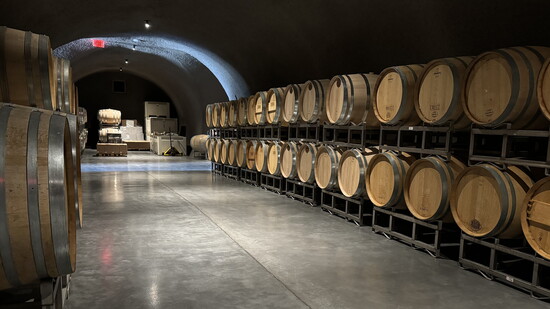Long before Walla Walla became synonymous with world-class wine, it was simply the hometown next door for a young girl. I remember riding down Main Street in Milton-Freewater—waving from a float as a princess in the annual Pea Festival Parade. Back then, wine was just a whisper.
By the late 1990s, my husband and I had become budding wine enthusiasts—and Walla Walla had started to reveal its voice. It was one of the first regions we fell in love with, and we’ve returned ever since—witnessing a transformation as rich and layered as the wines themselves. Every visit feels like coming home, yet there’s always something new to discover. That’s part of Walla Walla’s charm: the mix of familiar warmth and fresh momentum.
Today, those whispers have become a full choir. With nearly 170 wineries and just under 3,000 acres of vines, Walla Walla has evolved into a dynamic wine destination that’s not just rising—it’s arrived. Even Forbes described it recently as “the ground floor of something epic.”
So, is Walla Walla the world’s most underrated wine region?
The answer may be yes. And it won’t be for long.
Heart, Community, and a Sense of Place
“When I chose to buy land and plant vineyards in Walla Walla, I knew the region could produce great wine,” says Echoland’s Doug Frost, Master of Wine and Master Sommelier—one of three in the world. “But it was the community, as much as anything, that cemented my confidence. It’s a place where winemakers collaborate and support each other in ways I have not seen anywhere.”
That collective spirit shows up in the tasting rooms, the vineyards, and the people behind the pours. It’s not just about selling bottles—it’s about sharing stories.
A Valley Reimagined
Once known for peas and sweet onions, the valley now generates over $500 million in wine sales and tourism, drawing nearly 750,000 visitors annually.
“Sometimes Boise can feel a little tucked away,” says Natalie Plummer. “So being able to drive just four hours and land in Walla Walla feels like discovering a whole new world. The rolling hills, intentionally designed vineyards, and genuinely knowledgeable winemakers make it a destination worth savoring.”
It’s also deeply photogenic—sun-drenched vines, blue skies, and golden light that seems to stretch forever.
Old Roots, New Vision
Walla Walla isn’t new to agriculture—it’s been a fertile farming valley for generations. What makes its wine scene extraordinary is how it blends legacy and innovation.
“It’s incredibly rewarding to see graduates shaping the region’s future,” says Winemaker Marcus Rafanelli of L’Ecole No. 41, a Walla Walla Community College alum and former instructor. “It’s a full-circle story that speaks to the quality and passion here.”
The result? Wines that honor the land, reflect the people, and continue to push the region forward—one vintage at a time.
Why Walla Walla?
In Walla Walla, the soil tells stories and mountain breezes shape the vines; however, this valley offers more than terroir—it offers soul.
“We can grow almost everything here,” says Brandon Moss of Gramercy Cellars. “From Syrah and Merlot to Viognier and Sauvignon Blanc—it’s an open palette for winemakers. You don’t go many places where you find this quality in every wine you taste.”
Jean-François Pellet of Pepper Bridge Winery agrees: “The potential here is unlimited. We’re still learning what grows best, but the climate, the people, and the passion make it unlike anywhere else.”
Small in volume but vast in spirit, Walla Walla remains a place of connection, creativity, and discovery.
Walla Walla is four scenic hours from Boise to a memorable experience.
